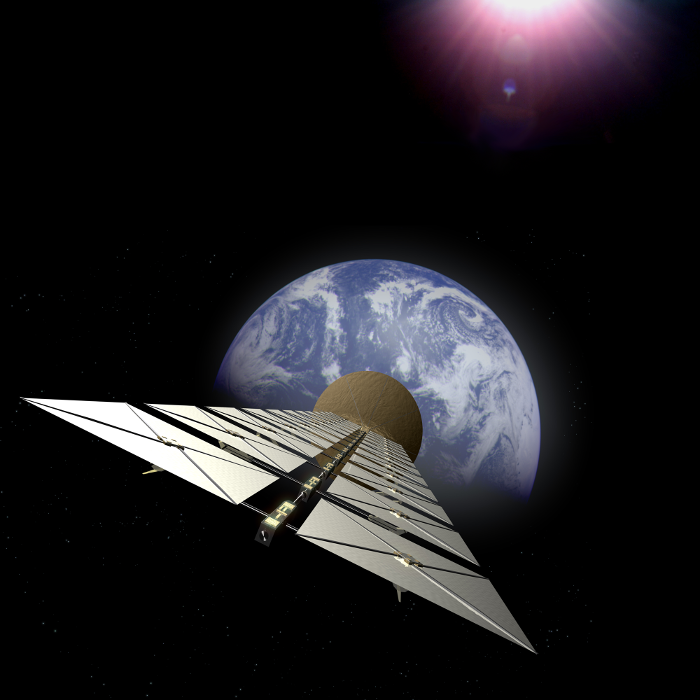Space-based Solar Power

Space based solar power satellites (SPS) are large structures in space that convert solar energy, captured as solar irradiation, into a form of energy that is transmitted wirelessly (WPT) to any remote receiver station. This receiver could either be on Earth, or on a high altitude platform (aircraft), other spacecraft or even on the surface of the moon or other planets. The original idea took form in the 1970's by the Czech-US engineer Dr. Peter Glaser and ever since a variety of studies have been undertaken. These studies have led to a large diversity of concepts which use different forms of power generation, conversion and transmission principles.
How is the power transmitted to Earth?
Currently the so-called reference design transforms solar power into electricity via photovoltaic cells in geostationary orbit around Earth. The power is then transmitted via electromagnetic waves at 2.45 GHz to dedicated receiver stations on Earth, "rectennas", which convert the energy back into electricity used in the local grid.
How much power can solar power satellites deliver?
The power range of the concepts for SPS is from a few tens of MW to several hundred of GW. Just for comparison purposes, a modern standard nuclear power plant delivers about 1 GW and the energy need for Europe in 2020 is estimated to be about 500 GW. If we can come close to the theoretical transmission efficiencies via electromagnetic waves (50-60%) then we could produce around 400W electricity per square meter on Earth receivers, which is about two to three times the amount we could receive from the same area of terrestrial PV panel. Furthermore, this would be produced continuously, day and night.
The advantages and disadvantages of a space-based system
One of the main advantages of a solar power station is the continuous power generation. Unlike the day-night cycle of solar arrays on Earth, a SPS in geostationary orbit 35786 km above earth) will continuously face the sun and provide a constant output over time. The solar irradiation (W/m2) outside of the Earth's atmosphere is also slightly higher. The continuous energy supply will also put much less stringent demands on the storage capabilities, which are in general large and expensive. A second advantage is obtained by the wireless power transfer to any location on the planet. This will remove the requirements of a large-scale electricity grid and allows for dynamically allocating power to the regions where it is required. A possible third advantage is the level geopolitical playing field in which the energy is equally collected and distributed by all participating countries.
Clearly, one of the main challenges for any space-based solar power satellite is the construction of large structures in orbit. Not only does it require significant amounts of material to be launched into space, these materials will need to be assembled, maintained and possibly replaced over time. In fact, due to the harsh space environment, the lifetime of current solar panels in space is significantly shorter compared to the Earth surface. A second complication is related to the wireless power transmission to the Earth surface, which requires transmission via electromagnetic waves at high transfer efficiencies. To stay below safety limits, this will require very large diameter receiver antenna's (or rectenna's), although in comparison to earth bases solar arrays the total area coverage will be smaller.
ACT Research
The final trade-off will depend on the above as well as many other parameters. This is an active area of research of the Advanced Concepts Team. By analysing and weighing all the system requirements and operational conditions, we aim to provide a better insight in the competitiveness of SPS power.
More information
A brief overview of SPS is given in the video below, and all ACT activities in the field are regularly published at different international conferences. Please find a list of selected publications on the studies and publications page.